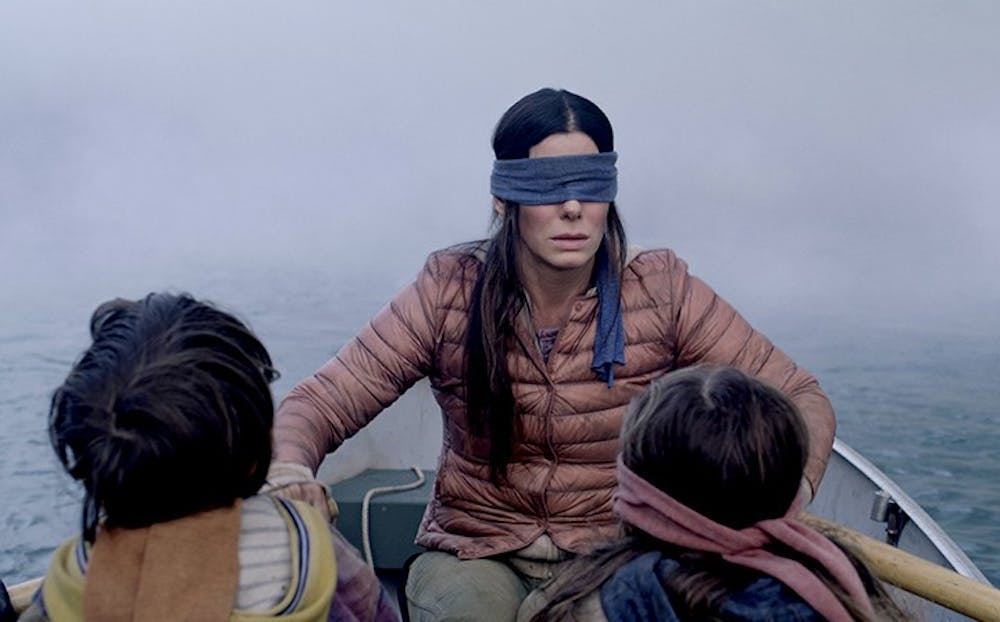A knife thunking into a corpse. A door slamming open as the killer walks in. Breaths rasping out of a hysterical teenager. Horror isn’t evoked by images; it’s illustrated by audio.
Sound and music in horror media give context to the events happening on screen, taking it from a flat, unmoving experience to an engaging one that keeps your focus.
“Auditory stimuli are very powerful," Douglas Wedell, director of the USC Institute for Mind and Brain, said.
Wedell and co-researcher Svetlana Shinkareva have worked together on various projects over the past eight years studying how we process auditory and visual stimuli, using tools such as fMRI.
Wedell said that in previous research of when visuals are played along with similar mood of audio, there was a superadditive effect. In other words, when the video was shown with audio that matched the tone, it had a bigger effect on viewers, even more than the sum of its parts.
Audio is really useful in horror movies because it is able to foreshadow moments to come or signal the presence of whatever evil entity that is stalking the protagonists. The use of audio cues makes it entirely possible to never actually show the antagonist.
Besides adding to the suspense, audio can also be used independently to put the user on edge. Characteristics such as dissonance, noise and juxtaposition of setting can make for deeply creepy experiences for viewers.
Dissonance is a powerful tool to unsettle viewers.
“When you put two notes that don’t go together … our system will automatically get on alert with that,” Wedell said. “It’s very effective to use in a movie if you want to put people on the edge of their seats.”
Julie Hubbert, associate professor in the School of Music, said composers have lots of tricks, such as sudden interruptions or using high or low pitch instrumentation to cause feelings of confusion in the viewer.
Acousmatic sound effects, Hubbert said, is the technique of using sounds that are “not attached to any activity you see on the screen. They seem to come from nowhere and they’re really unsettling.”
Hubbert said this kind of sound fatigues the viewer and lets the viewer know that something big is coming. These sounds can also make the use of silence much more effective, even if the audience didn’t notice the sound consciously while it was present.
“A really common trope in horror films is, like, childlike music,” Hubbert said. “It can be very effective for leading us in a different direction. For making us feel comfortable and then we’re not ready for the visual interruption that we see.”
Wedell said this effect is part of his research on the effects of incongruent visuals and audio.
“There’s something called the negativity bias," Wedell said. "When you combine a positive with a negative, it doesn’t end up halfway in between; it tends to end up more towards the negative.”
It's worth mentioning that humans tend to put more stock in visuals, which Wedell calls “visual dominance.” Intense visual images do tend to pack more of a punch than audio alone can muster, but that doesn’t mean the unique strengths of audio should be discounted. Audio gives visual another dimension, another way to tell the story. If it weren’t there, there is no way horror cinematography as it is now could be anywhere near as effective. Try watching the 1960s Psycho shower scene on mute and you’ll see how much Bernard Herrmann’s soundtrack adds to the scene.
Since so much of horror is good storytelling, an audio-only format can work really well. Two really good examples of this are audiochuck’s “Full Body Chills” and Aaron Mahnke’s “Lore.”
So when you are settling in this Halloween to watch a couple horror flicks, whether alone or with a few friends, take a second to appreciate the soundscape and prepare to be scared.

